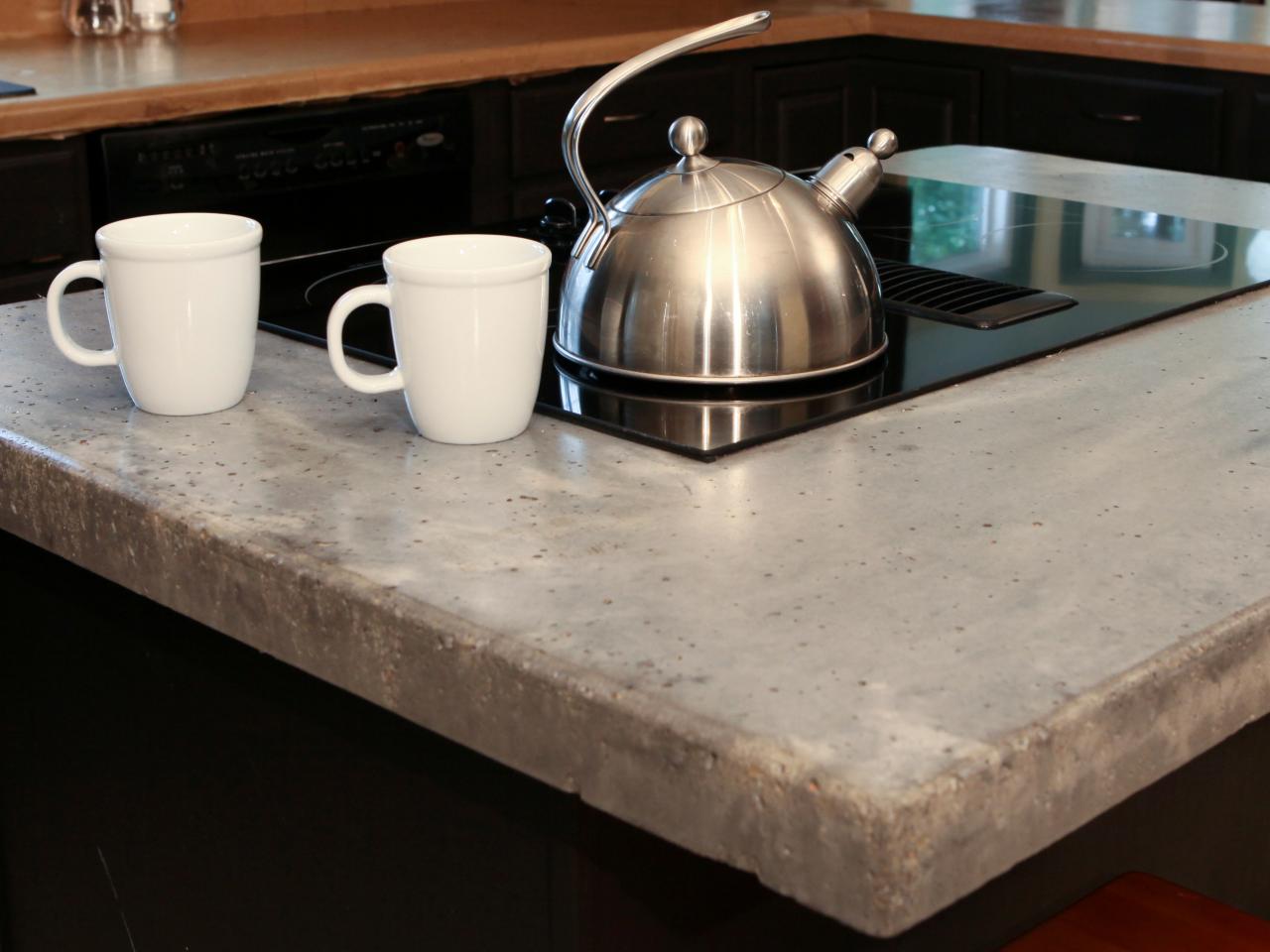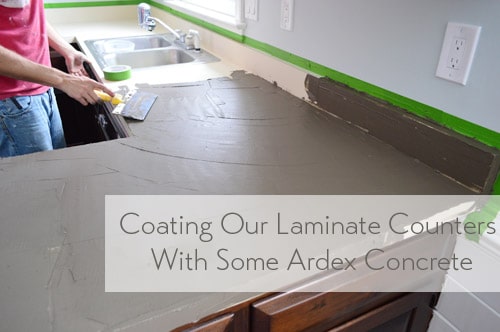Do It Yourself (DIY) concrete countertop kits have gained popularity among homeowners and craftsmen looking to add a unique and stylish touch to their kitchens, bathrooms, or outdoor spaces. These kits provide an accessible way to create custom concrete countertops without the need for extensive experience in concrete work. In this comprehensive guide, we will explore DIY concrete countertop kits, discussing their benefits, the components typically included, the steps involved in the process, and some important considerations.
Cost-Effective: DIY concrete countertop kits are a cost-effective option compared to hiring professional contractors. You can create stunning, custom countertops at a fraction of the cost of traditional methods, making it an attractive choice for budget-conscious homeowners.
Customization: One of the key advantages of DIY concrete countertop kits is the ability to customize the design. These kits typically include materials for coloring and stamping, allowing you to create a countertop that matches your aesthetic preferences.
Comprehensive Components: DIY concrete countertop kits usually come with all the necessary components, including pre-mixed concrete, reinforcing fibers, forms, edge profiles, and sealers. This comprehensive package simplifies the process and ensures you have everything you need.

Step-by-Step Instructions: Most DIY concrete countertop kits provide step-by-step instructions to guide you through the process. These instructions are often designed to be user-friendly, allowing individuals with no prior concrete experience to achieve professional-looking results.
Flexibility: DIY kits offer flexibility in terms of design and size. You can create countertops of varying shapes, sizes, and thicknesses, depending on your specific requirements. This flexibility allows you to tailor the countertops to your space.
Project Satisfaction: Completing a DIY concrete countertop project can be highly satisfying. You get to witness the transformation of raw materials into a functional and aesthetically pleasing countertop, which can be a source of pride.

Learning Opportunity: Engaging in a DIY concrete countertop project can be a valuable learning experience. You’ll gain insights into concrete work, which may be useful for future DIY projects or even professional endeavors.
Time Commitment: While DIY concrete countertop kits are cost-effective, they do require a significant time commitment. Mixing, pouring, and curing concrete takes time, and the entire process can span several days, so be prepared for the time investment.
Preparation and Safety: Adequate preparation and safety measures are essential. You’ll need to ensure your workspace is well-prepped, and you should follow safety guidelines, including wearing protective gear such as gloves and safety glasses.
Curing and Maintenance: Proper curing and ongoing maintenance are crucial for the longevity of your DIY concrete countertops. Curing involves keeping the concrete moist as it hardens, and maintaining the countertops by resealing them periodically is essential to protect against staining and damage.
DIY concrete countertop kits offer an accessible and cost-effective way to create custom countertops for your home. With comprehensive components, step-by-step instructions, and the flexibility to customize the design, these kits empower homeowners and DIY enthusiasts to take on unique and satisfying projects. However, it’s important to be prepared for the time commitment, focus on safety and proper curing, and be mindful of the maintenance needed to ensure the durability and longevity of your DIY concrete countertops.

How to Build a Concrete Countertop?
Building a concrete countertop can be a rewarding DIY project that adds a unique and personalized touch to your kitchen, bathroom, or outdoor space. Concrete countertops are durable and versatile, allowing for various design possibilities. Here’s a comprehensive guide on how to build a concrete countertop.
Materials and Tools You’ll Need:
- Concrete Mix: You can use a high-quality, bagged concrete mix specifically designed for countertops, which often contains additives for strength and workability.
- Reinforcement: Depending on the size of your countertop, you may need steel mesh or fiberglass reinforcement to add strength and prevent cracking.
- Melamine or Plywood: This will serve as the form for your countertop. Melamine is often preferred due to its smooth surface, which helps achieve a polished finish.
- Release Agent: To ensure easy removal from the form, you’ll need a release agent. Vegetable oil or commercial release agents are commonly used.
- Vibrating Table or Sander: To remove air bubbles and ensure a smooth surface, you’ll need a vibrating table or a random orbital sander.
- Concrete Sealer: A high-quality concrete sealer is essential to protect your countertop and enhance its appearance.
- Sink Cutout Template: If you’re including a sink, you’ll need a template to create the cutout.
- Rubber Gloves, Safety Glasses, and Dust Mask: Safety gear is crucial when working with concrete.
Step-by-Step Guide:
- Measure and Plan: Measure the dimensions of your countertop space, considering any sink or cooktop cutouts. Plan the design and decide on the thickness of your countertop.
- Build the Form: Create the form for your countertop using melamine or plywood. Cut the pieces to size, assemble them, and secure them with screws. Ensure the form is level and smooth on the inside, as this will determine the appearance of your countertop.
- Apply Release Agent: Coat the inside of the form with a release agent to make it easier to remove the countertop after it cures.
- Reinforce: If your countertop is large, add steel mesh or fiberglass reinforcement to the form. This will help prevent cracking.
- Mix and Pour the Concrete: Follow the instructions on your concrete mix to prepare it. Mix it to the desired consistency, which is typically quite wet. Pour the concrete into the form, making sure it’s evenly distributed.
- Vibrate and Trowel: Use a vibrating table or a random orbital sander without sandpaper to vibrate the form. This will help eliminate air bubbles. Smooth the surface with a trowel.
- Add Decorative Elements: If you want to incorporate decorative elements, such as colored pigments or aggregates like glass or stone, now is the time to add them to the surface.
- Cure and Drying: Cover the countertop with plastic sheeting and allow it to cure for several days. During the curing process, keep the concrete moist by spraying it periodically to prevent cracking.
- Remove from the Form: Once the concrete has cured, carefully remove the countertop from the form. This should be done with caution to avoid any damage to the concrete.
- Polishing and Sealing: Use progressively finer grits of diamond polishing pads to achieve the desired level of smoothness and sheen. After polishing, apply a high-quality concrete sealer to protect the surface.
- Sink and Cooktop Cutouts: If you have cutouts for sinks or cooktops, create these using a template and appropriate cutting tools.
- Install the Countertop: Once your concrete countertop is finished, it’s ready to be installed in your kitchen or bathroom. Make sure it’s adequately supported and sealed around any edges.
Concrete Countertop DIY – A Beautiful Mess
Concrete Countertop DIY – A Beautiful Mess
DIY Concrete Over Laminate Countertops Using Feather Finish

Trying Our Hand At DIY Ardex Concrete Counters Young House Love

Concrete Countertop DIY – A Beautiful Mess
Related articles:
- Vibrating Table For Concrete Countertops
- Concrete Countertop Coatings
- How To Make Concrete Countertops For Outdoor Kitchens
- Concrete Countertop Edge Profile Forms
- How To Build An Outdoor Concrete Countertop
- Glass In Concrete Countertops
- Concrete Countertops That Look Like Marble
- Concrete Countertops For Kitchens
- Concrete Countertop For Outdoor Kitchen
- Concrete Countertops That Look Like Granite